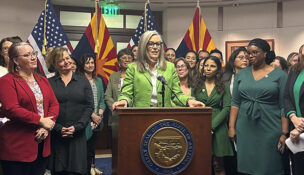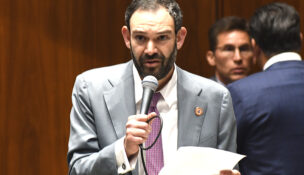National group blasts state’s child welfare system
Arizona Capitol Reports Staff//August 24, 2007//[read_meter]
National group blasts state’s child welfare system
Arizona Capitol Reports Staff//August 24, 2007//[read_meter]
A childcare group assailed Arizona’s child welfare system this month, saying it is in a “state of perennial panic.” The Virginia-based National Coalition for Child Protection Reform charged that the...
No tags for this post.

















